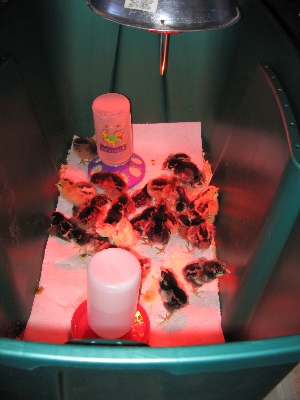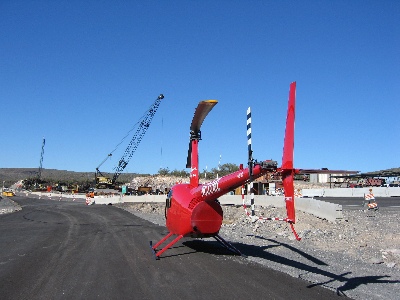I get ready to wipe my server clean and start installation but get hung up by bad hardware.
By Friday, I had all my Web sites moved over to GoDaddy.com. The LangerBooks.com site, which had been having problems since I initially set it up there on Monday, was not fixed by Friday. So I deleted the setup an started again. Within minutes, it was set up properly and ready to go. Over the weekend, the DNS change was propagated through the system. Just about every browser looking for one of the 18 domain names I host was pointing to the appropriate site on GoDaddy.com.
My e-mail is already hosted by GoDaddy.com. All my e-mail addresses use the theflyingm.com domain name and that domain has been hosted on GoDaddy for at least a year now. So I didn’t need to move any of my e-mail server stuff. Although it exists on my local server, nothing points to it.
There are only three things that remain hosted on my server:
(1) FileMaker Pro provides live access to searchable data. I’m running FileMaker Pro Server 6 on that machine, even though version 8 is current. I wrote all my Web-compatible routines using FileMaker’s CDML language, which is no longer supported by FileMaker Pro 8. So if I updated to the new version of the software, I might have to rewrite the Web interface. That’s not something I want to do. FileMaker also creates the static text ssi files I use on serveral sites. Those files are now put into place using AppleScripts that call Fetch into action. A cool solution, if I do say so myself. After I install the server, I’ll have to reinstall FileMaker Pro, including all the databases and CDML files that run with the Web sites. I’ll also have to reinstall Fetch and make sure the AppleScripts go in the right places. This should take about an hour.
(2) Nicecast is what gets KBSZ-AM radio on the Internet. It’s pretty much plug and play with just a few settings to tweak. I expect this to take about 20 minutes to reinstall.
(3) Evocam is what creates the Webcam image for wickenburg-az.com. It’s actually two images and a movie. It has FTP built right in. Reinstalling should be pretty straightforward.
One other piece of software runs on the server all the time. It’s called Audio Hijack Pro and its job is to automatically record and save certain broadcasts from KBSZ’s stream. For example, the 8 AM news report is available online every day after 8:20 AM. This is all automated: Audio Hijack Pro records the show and runs an AppleScript routine that uses Fetch to upload it to the appropriate directory on the KBSZ-AM Web site (now at GoDaddy.com). Likewise, Audio Hijack Pro records the daily “Around the Town” show and the first hour of the weekly “Rock-a-billy & Beyond Show.” (Starting tomorrow evening, it’ll also be recording my first radio show, “Classic Rock Cuts.” You can tune in online on Wednesday nights at 8 PM MST. I’m looking for sponsors; call KBSZ at 928/668-1250 during office hours to see how much bang you can get for $5 or $10 bucks. Make sure you tell Jo you want to advertise on my show, which will be podcast, too.)
So yesterday morning, I had a clear idea of what I needed to do and what files I needed to preserve from the server. I made copies of all the files I needed to preserve and put them in a folder that I’d use to create a CD. This would make it easy to load them all back in after I wiped the computer clean and reinstalled the software.
And that’s where I hit a brick wall. The CD burner wouldn’t work. It kept giving me error messages.
No problem. I used my network to move all the files over to my main production computer and created the CD there. Now I was all ready to install.
I put the Mac OS X 10.4 Server Unlimited Client DVD disc into my server computer and slid the drawer close. Then I waited expectantly for the disc icon to appear onscreen.
Nothing happened.
I pushed the button to slide the disc in and out and in and out. Nothing. I pulled the disc out and put in the first install CD. (It comes on one DVD or a bunch of CDs; I’d rather use the DVD so I don’t have to switch discs.) Nothing happened.
I put the DVD into my production computer. It appeared onscreen just like it should.
Shit. I had a real hardware problem.
I blew canned air into the CD drive. Lots of dust flew around. Not good.
My office can be a very dusty place. Part of the problem is that a few years ago, some idiot decided to drive a perfectly good western business — the Big Corral horse boarding/riding facility — out of its downtown home and bulldoze all the trees, shrubs, and buildings off the property. In its place, the idiot planted a “For Sale” sign and erected part of an ugly chain link fence. To this day, the land lies open and barren, baking in the sun, supplying that side of town with all the dust it can handle. In my situation it’s a bit worse. I had some work done on the floors in my unit’s kitchen and bathroom and the sanding done by the floor guy sent more fine dust into the air than I thought possible. With a big fan on the back of each of my computers sucking air in, it’s no wonder they were filled with dust.
Of course, I’d already used the canned air on that computer. Just a few days before, I’d installed 512 MB of RAM. While the machine was wide open, I’d used the canned air on it and it was pretty clean. But I hadn’t dusted the drives.
Long story short, I couldn’t get the drive to work. And I didn’t have a spare. And the nearest Apple store didn’t have one. And Apple’s telephone support people told me a replacement drive would cost $354 with tax and shipping. But while I was waiting on hold to hear this bit of news, I discovered I could buy an external Firewire drive for about $100. Sheesh.
By this time, it was after 2 PM and too late to do any installation anyway. I figured I’d bring my new 80 GB external Firewire hard drive — the one I bought t help out my PowerBook — to the office, make a disk image of the DVD onto that, and use the disk image to install the server. If that didn’t work, I’d just buy an external CD-R for the computer and use that. Of course, all this was putting me back in schedule, but I really had no reason to rush. The Web sites were enjoying their new home and were paid up for 2 months.
Of course, I had to give the CD-R/DVD-R drive one last try at repair. So I went to the local hardware shop, bought a cheap ratchet screwdriver with a bunch of heads, and removed the drive from the computer. This was no easy task because although the computer opens easily enough, the CD drive and the Jaz drive I’d bought to go with it (and used about 4 times) were really jammed in there. Then, with the computer up and running without it — no reason to keep that software offline — I removed screws and protective plates until the optical lens and drive mechanism were revealed. I had to peel back two pieces of tape that were obviously in place to prevent the average user from doing what I’d done. I blew more air on it and moved the drive mechanism back and forth with my fingers. It didn’t look screwed up. Satisfied that I’d done all I could do, I put it all back together and stuffed it back into the computer. I fired it all back up and pressed the button to slide the drawer out.
The drawer wouldn’t slide out at all anymore. I’d mounted it a tiny bit too high and it was catching on the computer case.
So I opened up the computer while it was running and did what anyone else in my position would do: I banged on the top of the CD drive to nudge it down. The drawer slid open.
I stuck the DVD in there, fully realizing that that might be the last time I ever saw it. Then I slid the drawer back in.
Would you believe it? It worked!
I couldn’t believe that it was really reading the DVD as well as it was, so I decided to test it by starting the computer from the DVD. That worked, too.
Of course, I didn’t really want to install the software then. It was after 3 PM and I didn’t feel like tackling the installation that late in the day. So I restarted from the hard drive and let all that software come up and run again.
But now I have my work ready for me today.






